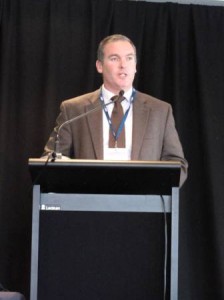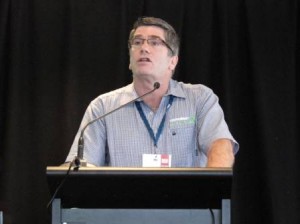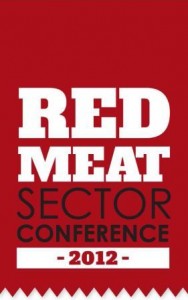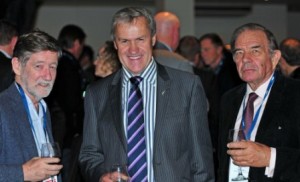 There is no consistent evidence of a ‘convincing link’ between colorectal cancer and red meat, according to one leading US epidemiologist who visited New Zealand recently.
There is no consistent evidence of a ‘convincing link’ between colorectal cancer and red meat, according to one leading US epidemiologist who visited New Zealand recently.
With extensive experience in health research methodology and interpretation of epidemiological studies, particularly nutritional epidemiology, Dr Dominik Alexander is based in Boulder, Colorado, where he works for engineering and science consultancy firm Exponent Inc in its Health Sciences Centre for epidemiology, biostatistics and computational biology.
As an epidemiologist, he’s involved with examining exposure and outcome.
“Food is a necessary exposure. All people have to eat,” he says, adding that the result of over-exposure leads to higher Body Mass Index (BMI) rates, where there is an established increased risk for cancers such as colorectal, the most common cancer affecting the alimentary tract.
Last year, the World Cancer Research Fund released the second expert report on a continuous update project on diet and colorectal cancer. This was a comprehensive study, carried out by a panel of scientific experts, which reviewed 567 nutrition-cancer studies from all around the world (see Food New Zealand, July 2011).
The panel’s conclusion was that physical activity and foods containing dietary fibre convincingly reduced the risk of colorectal cancer and, the consumption of garlic, milk and calcium probably also helps to decrease the risk. However, the report stated that there was a ‘convincing link’ between the consumption of fresh red meat – defined as beef, pork, lamb and goat from domesticated animals – and processed meat and an increased risk of colorectal cancer. This fact was picked up by media around the world and has been used to guide Department of Health nutritional guidelines here and overseas.
However, Dr Alexander points out, it is an ongoing appraisal, which, in his view, has overstated the conclusion that there is a link. “The scientific evidence does not support the ‘convincing link’. In fact, it’s getting weaker over time as more studies are published,” he says.
In addition, the report separated out fresh red meat and processed meats, like salami and jerky. However, he says, there’s actually very little difference between the two in terms of associations.
In the US, he has found the consumers with the highest intake of red meat tend to also smoke, have a higher alcohol consumption rate, do little exercise and are generally unhealthier. There’s also genetics and age to take into account as more people in developed, and increasingly in developing countries, are reaching senior years – one of the strongest risk factors for cancer.
“It’s very challenging to disentangle the factors.”
On recommended portion-sizes (intake values), he argues that they are difficult to quantify as every person is a different size and, therefore, difficult to quantify their risk. He calls it ‘heterogeneity’, where there is no uniform pattern: “75g might work for a small person, for example, but not for a large man involved in physical activity all day.”
In his work, he has looked at a range of intake values and sees no range of patterns for increased risk, with increased consumption.
In Dr Alexander’s view, the focus should be on cancer prevention. He says, “It all starts with physical exercise and maintaining a healthy body weight. In addition you need a well-balanced diet.”
Dr Dominik Alexander PhD MSPH visited New Zealand and Australia in September in a programme organised by Beef + Lamb NZ Inc and the Australian Meat & Livestock Association.
This article appeared in Food NZ magazine (October/November 2012).





